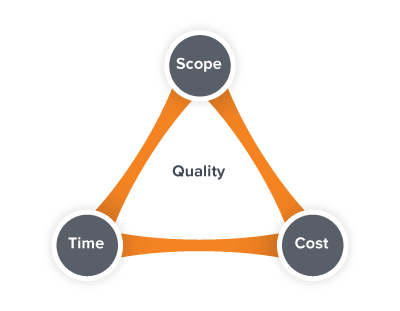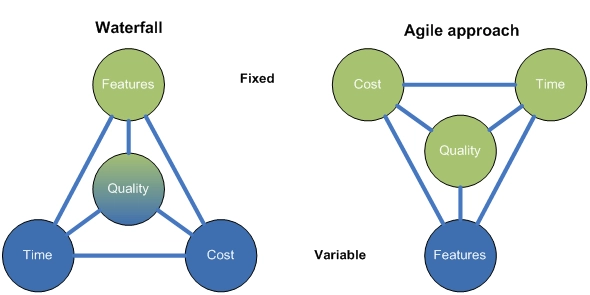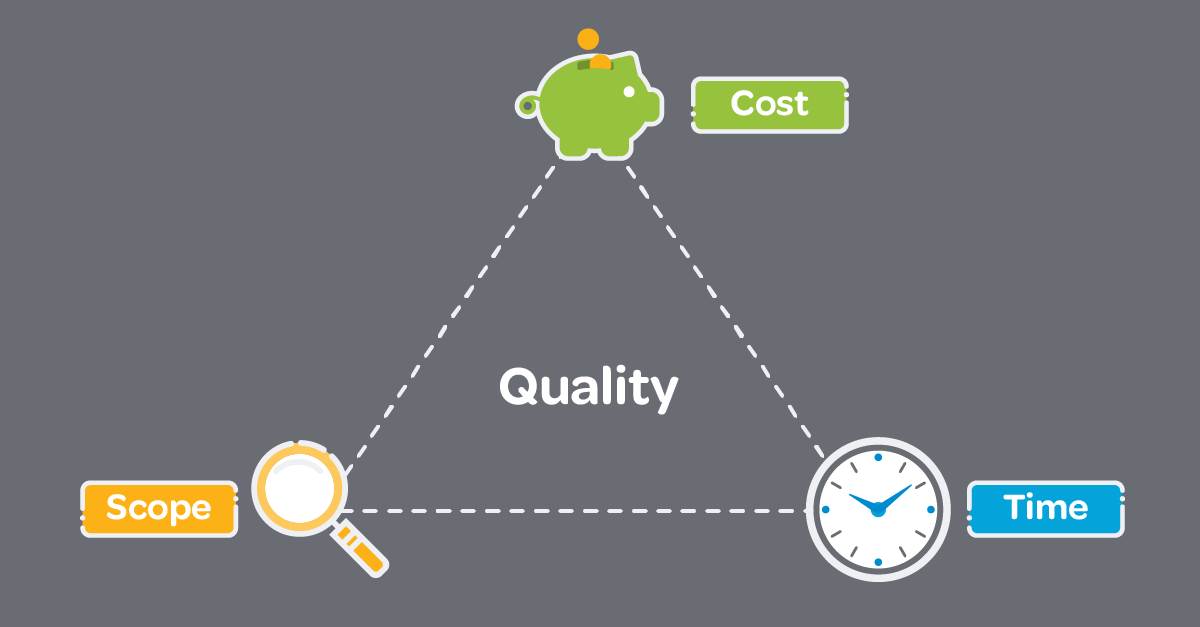Project Constraints: Managing Strategies for Success
Ever found yourself in a project management quagmire, wrestling with constraints that seem to pop up from nowhere? I’ve been there, and I can tell you, it’s no picnic. Understanding project constraints is crucial to navigating these challenges and steering your project to success.
In this article, I’ll demystify the concept of project constraints and provide some real-world examples. We’ll explore how these constraints can impact your project and how you can effectively manage them. So, buckle up and get ready for a deep dive into the world of project constraints. Your journey to becoming a more adept project manager starts here.
Understanding Project Constraints

Building upon our discussion, it’s crucial to dig into different project constraints and their influence on project management. Don’t forget, that a project constraint is a restriction or limitation, that can affect various aspects of project execution if mishandled.
Types of Project Constraints
First, let’s break down the types of project constraints that dominate most projects. The Triple Constraint Model, also known as the Iron Triangle, is a key concept in project management, highlighting three primary constraints: time, cost, and scope.
- Time: The schedule constraint encompasses the total length of the project from start to finish, setting a clear timeline for completion. Examples include project deadlines and milestones that dictate the pace of work.
- Cost: The budget constraint refers to the financial resources assigned to the project. For instance, labor wages, equipment costs, or material prices fall under this category.
- Scope: The scope constraint defines the work required to deliver the project. It could be new software features in a tech project or construction specifications in a building project.
Some project managers also include quality, resources, and risk as additional project constraints.
The Role of Constraints in Project Management
Steering towards the importance of project constraints, they form the backbone of any project. Mastering them means structuring a project effectively, keeping it on track, and ensuring its successful completion. Taking them lightly, however, can lead to project failure.
Here’s how constraints factor into project management:
- Planning: Constraints outline the boundaries within which the project must operate. They contribute to a robust project plan, facilitating accurate estimation of timelines, resources, and costs.
- Control: Their continuous monitoring and control can help mitigate risks, maintain project quality, and avoid cost overruns or delays.
- Decision Making: Project constraints can influence decision-making. Variances in constraints often demand changes in the project approach, scope, or resources.
As project constraints pair opportunities with challenges, acknowledging, understanding, and managing them is vital for project success. However, it’s not as daunting as it sounds, given the right strategies and tools. Stay tuned as we explore how to effectively manage project constraints in the upcoming sections.
Classic Examples of Project Constraints

Delving deeper into real-world illustrations, let’s examine the classic examples of different types of project constraints.
Time Constraints in Action
Consider a software development project, it’s due in six months, which is a considerable time constraint. Being aware of the limitations, I juggled with scheduling and allotment of tasks. I divided the workload into smaller, manageable sprints. Moreover, by using tools like Gantt Charts, the critical path of the project was outlined, optimizing the duration of the project and ensuring timely completion.
Budget Constraints Scenarios
In another scenario, imagine a construction project with a strict budget limit. Confronted with the monetary boundary, my team and I pioneered a cost-effective approach. We researched different material suppliers, sourced cost-efficient alternatives, and meticulous budget tracking. By these strategic steps, we adhered to our financial constraints without compromising the project quality.
Quality Constraints Challenges
Finally, contemplate a hotel renovation situation. The objective is to refurbish the hotel to a five-star standard, posing a considerable quality constraint. Respecting this quality bond, my team incorporated meticulous planning, frequent quality checks, and rigorous inspection procedures. The use of high-end materials and skillful craftsmanship was ensured, attesting to the superior quality of the project.
Through these examples, it’s demonstrated that mindful regard for project constraints can yield successful project completion without compromise. Swift understanding and proactive management of constraints become the pillars of success in projects.
Real-World Case Studies of Project Constraints

Building on previous discussions, this part looks at the practical application of project constraints in different settings. Using real-life case studies, it unpacks the impacts of constraints like time, cost, and scope in actual projects. By examining success stories and lessons drawn from failures, it further illuminates the importance of understanding and managing project constraints strategically.
How Constraints Shaped Success
In a software development project, I documented, that time was one of the critical factors that determined the project’s success. The client had a promotional campaign coming up in six months and needed the software ready by then. The team applied strategic planning, defined clear goals, and streamlined tasks to deliver the project on schedule. This case reveals the role of time as a critical constraint and emphasizes how proactive management yielded positive results.
An excellent example of cost constraints is a construction project I carried out. The client had a tight budget but high expectations. With practical planning and prioritization, we managed to complete the project within the budget without compromising quality. It’s an instance that demonstrates the essence of effective cost management in striking a balance between resources and expectations.
Reflecting on quality constraints, a hotel renovation project stands as a prime example. The hotel wanted a complete makeover while ensuring existing quality standards weren’t compromised. By implementing rigorous quality control measures and regular audits, the project was executed successfully without diminishing the anticipated standards. Consequently, the case underscores the importance of effective quality control in preserving excellence amidst tight quality constraints.
Learning from Constraint-Induced Failures
Recognizing failures as valuable learning opportunities, the exploration of projects that encountered challenges due to constraints can provide crucial insights. A case that stands out involves a software development project that failed due to scope creep. Despite having time and cost under control, expanding the project scope led to unanticipated complexity, ultimately causing project failure. This example underscores the significance of managing scope constraints and the pitfalls of neglecting them.
Another notable example involved a construction project hampered by mismanaged cost constraints. Predictable budget overruns pushed the project indefinitely, leading to eventual abandonment. This scenario elucidates how cost constraints can spiral out of control if not properly managed.
As these cases demonstrate, project constraints, if not handled with precision and proactive control, can lead to project failures. Understanding this dynamic is essential for more effective and strategic project management.
Navigating Project Constraints

Building on our understanding of the Triple Constraint Model and the importance of managing project constraints, we now step into the complexities of using strategies and tools. These are to navigate time, budget, and quality constraints.
Strategies for Managing Time, Budget, and Quality
The first key point involves learning how to strategize for managing time, budget, and quality in project constraints. Time management in projects, such as software development, comes down to setting realistic deadlines, breaking down the project into manageable tasks, and monitoring progress effectively.
For budget management in projects such as construction, I recommend developing a comprehensive financial plan that accounts for all potential costs and includes contingencies. Regular monitoring and reporting of expenditures are also crucial to keep the budget under control.
In terms of quality management, such as in a hotel renovation scenario, it’s essential to establish clear quality standards upfront. Regular inspections, reviews, and refinements can help maintain these standards throughout the project.
Tools and Techniques for Constraint Management
Objectively, it’s not just about the strategies used, but also about the tools and techniques employed for constraint management. Among them include project management software, like MS Project and Asana, that can provide real-time tracking of project progress, facilitating more effective management of constraints.
Gantt charts can also be instrumental in visualizing task timelines, allowing project managers to identify potential oversights or conflicts in scheduling that could impact the timeline. Risk management techniques, such as risk assessment and contingency planning, are also integral for proactively managing potential obstacles and uncertainties that can shift project constraints.
In essence, navigating project constraints is not a walk in the park but with the proper strategies and tools, it becomes a manageable task. The key lies in understanding the dynamics of time, budget, and quality, and the tools and techniques that can facilitate their management effectively and efficiently.
Adapting to Change: Constraints in Agile Projects

After developing a robust understanding of project constraints, including Real-World examples, let’s now shift the context towards Agile, a popular project management methodology. Agile presents a unique approach to working with such constraints, adeptly embracing change.
The Agile Approach to Constraints
Moving on from the traditional Triple Constraint Model, the Agile approach introduces flexibility, allowing projects to adapt in response to changes. Instead of firmly insisting on the initial plan, Agile focuses on making iterative adjustments for continuous improvement – a distinct difference from the traditional waterfall model. Agile also paves the way for feedback integration, essentially allowing room for modifications, and enhancing the overall project outcome. Software like JIRA and Trello serve as excellent tools, supporting this flexibility by enabling seamless tracking of tasks and progress.
For example, in the case of a software project, instead of defining exhaustive features at the beginning, Agile permits the introduction of new features based on stakeholder feedback in later iterations. This iterative process intensely adds value to the final software product, emphasizing user satisfaction rather than stringent scope adherence.
Examples of Agile Constraints Management
Agile’s method of dealing with constraints differs significantly from the traditional model. While traditional projects rigidly adhere to timelines, Agile projects work in time-boxed sprints – discrete time periods where specific tasks are expected to be completed.
Consider the instance of an eCommerce web development project that aims to launch before the holiday season to capitalize on the shopping frenzy. A traditional project might hit hurdles if the holiday season approaches faster than anticipated. However, for Agile, such time constraints won’t dramatically disrupt the project flow. The project team can re-prioritize tasks, focusing more on features that enhance customer experience and leaving fewer critical enhancements for later sprints.
Similarly, Agile tackles cost constraints differently, focusing on delivering the maximum value within the budget rather than merely meeting fixed requirements. Following the lean startup principles, project teams work on priority features first, emphasizing Minimum Viable Product (MVP)– a minimalistic version that meets basic user needs.
Again, envision the case of the eCommerce web development project. The project team, under cost constraints, would first develop an MVP, focusing on listing and selling products and adding advanced features like product customization or live chat support in subsequent iterations.
Agility empowers projects to navigate and thrive amidst constraints, demonstrating the dynamism that modern project environments require.
Conclusion
We’ve journeyed through the landscape of project constraints, and it’s clear that understanding and managing these constraints is key to project success. We’ve seen how traditional and Agile project management approaches handle time, budget, and quality constraints, highlighting the flexibility and adaptability of Agile methodologies. Tools like JIRA and Trello have emerged as game-changers, supporting iterative adjustments and feedback integration. We’ve also seen how Agile’s focus on customer-centric features and MVPs can help navigate constraints in projects like eCommerce web development. So, as project managers, it’s crucial we embrace these strategies, tools, and mindsets to successfully steer our projects through the turbulent waters of constraints. After all, it’s not about avoiding constraints, but mastering them, that sets us apart in the competitive world of project management.
Frequently Asked Questions (Faqs)
What is the Triple Constraint Model in project management?
The Triple Constraint Model in project management includes time, budget, and quality as the three major constraints that can impact a project’s success. The article emphasizes the effective management of these three aspects.
How can project constraints be strategically managed?
Strategic management of project constraints involves setting realistic deadlines, planning finances appropriately, and maintaining a focus on quality standards. Techniques may vary based on the project’s scope and requirements.
What is Agile project management and how does it deal with project constraints?
Agile project management is a flexible methodology that deals with project constraints through iterative adjustments and feedback integration. Agile projects work in time-boxed sprints and focus on delivering maximum value within budget constraints.
What tools support Agile project management?
Jira and Trello are two Agile tools mentioned in the article. They support adaptability in Agile project management, facilitating effective constraint management.
How do Agile projects adjust to time and cost constraints?
Agile projects adjust to time and cost constraints by focusing on customer-centric features and developing a Minimum Viable Product (MVP) first. This focus ensures optimal value delivery within available resources.
What benefits does agility offer in project management?
Agility in project management enables successful navigation and adaptation to constraints. It promotes flexibility, continuous learning, and feedback, helping teams to respond effectively to changes and deliver successful projects.

Leave a Reply